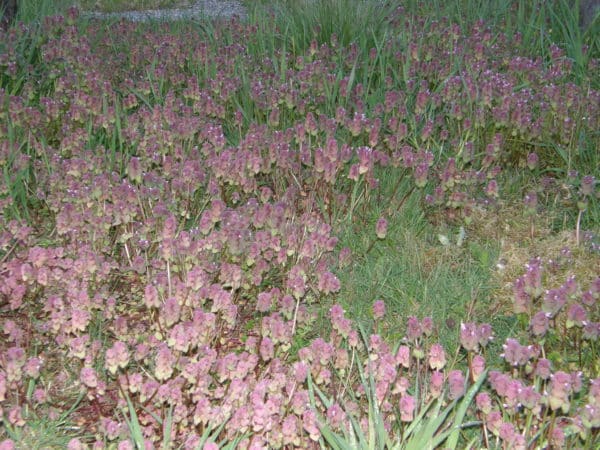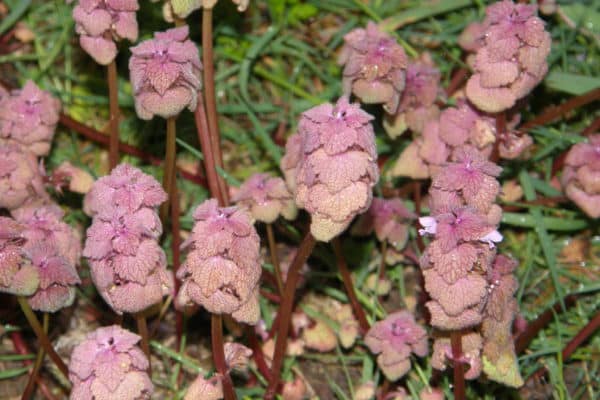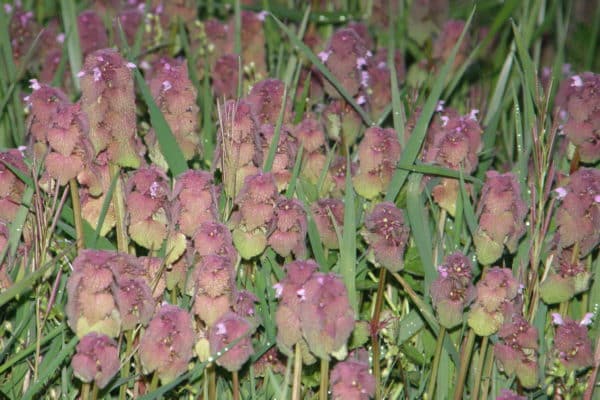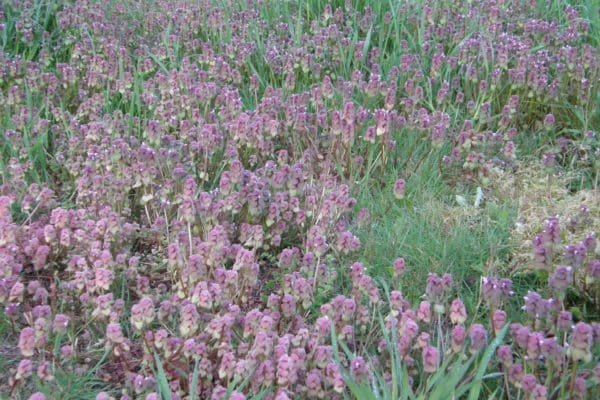Purple deadnettle
About This Species
Purple deadnettle (Red deadnettle, Purple archangel) is a short herbaceous plant that can survive as an annual or biennial. It was introduced from its native range of Europe and Asia. A single plant can produce thousands of seeds which remain viable in the soil for several years. It can also spread via stem and root fragments. Purple deadnettle thrives in a range of soil types from dry to moist and is frequently observed in lawns, waste areas, and gardens.
How to Identify
Purple deadnettle is a short plant that grows up to 30 cm tall, with square stems that can look like a dusty purple carpet from afar.
It has small pink flowers from March-May that bloom in the crease where the leaves meet the stem (these are called axillary flowers).
It leaves are hairy, oval to heart shaped, smaller and deep purple/plum coloured towards the top, fading to green and larger towards the base of the stem.

Take Action
Prevention is the best approach.
-
If you need advice about invasive species on your property or you are concerned about reported invasives in your local area, contact your local government or regional invasive species organization.

PlayCleanGo
Learn about best practices

Plantwise
Learn about best practices
Prevent the spread of this plant – never purchase or plant this species. If you have an infestation, focus efforts on continued mowing/cutting of the plant just prior to flowering to reduce seeding.
A few non-invasive alternatives to plant instead of Purple deadnettle include:
- Bunchberry (Cornus canadensis)
- False lily of the valley (Maianthemum dilatatum)
- Kinnickinnick (Arctostaphylos uva-ursi)
- Snow-in-summer (Cerastium tomentosum)
- Wild ginger (Asarum caudatum)
REPORT TO PROTECT BC’S BIODIVERSITY

Use the app
Observe and report to protect BC’s biodiversity

Report through this website
Use our form to tell us what you’re seeing and where.


















